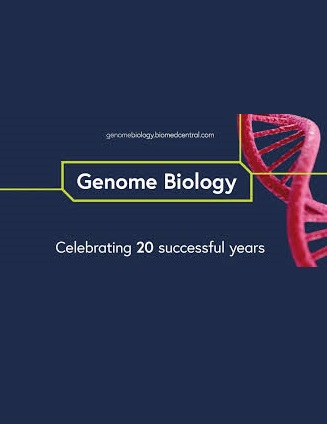DNA 5mC methylation inhibits the formation of G-quadruplex structures in the genome
IF 10.1
1区 生物学
Q1 BIOTECHNOLOGY & APPLIED MICROBIOLOGY
引用次数: 0
Abstract
G-quadruplex structures (G4s) have been identified in the genomes of many organisms and have been proven to play significant epigenetic regulatory roles in gene transcription. Intriguingly, only a small portion of the predicted G4-forming sequences can fold into G4s under cellular conditions. Here, we employ publicly available data, methylation inhibitors, DNA methyltransferase 1 (DNMT1) knockout, and multiple ‘Omics’ technologies to study the interplay between DNA methylation and chromatin accessibility on G4 formation and the impact on gene expression. We find an antagonistic correlation between genomic 5mC DNA methylation level and G4 abundance. The abundance of genomic G4s significantly increases when the genome-wide methylation level is reduced by methylation inhibitor treatment or DNMT1 knockout. The increase in G4 signals in DNMT1 knockout cells is reversed by DNMT1 overexpression. Combined ATAC-seq, whole genome bisulfite sequencing, and G4 CUT&Tag analyses demonstrate that 5mC DNA methylation inhibits G4 formation in both open and closed chromatin states. The inhibitory effect of 5mC modification on the formation of G4s is verified by circular dichroism and electrophoretic mobility shift assay in vitro. G4 CUT&Tag and RNA-seq analyses reveal that reduced DNA methylation enhances G4 formation and promotes the transcription of nearby genes. This study demonstrates that 5mC DNA methylation directly inhibits G4 formation in the genome and modulates subsequent gene transcription, confirming the interaction between G4s and DNA methylation as an important mechanism for epigenetic regulation of gene transcription.DNA 5mC甲基化抑制基因组中g -四重体结构的形成
g -四重体结构(G4s)已在许多生物体的基因组中被发现,并已被证明在基因转录中发挥重要的表观遗传调控作用。有趣的是,在细胞条件下,只有一小部分预测的g4形成序列可以折叠成g4。在这里,我们利用公开的数据、甲基化抑制剂、DNA甲基转移酶1 (DNMT1)敲除和多种“组学”技术来研究DNA甲基化和染色质可及性对G4形成的相互作用以及对基因表达的影响。我们发现基因组5mC DNA甲基化水平与G4丰度之间存在拮抗相关性。当甲基化抑制剂处理或敲除DNMT1降低全基因组甲基化水平时,基因组G4s的丰度显著增加。DNMT1敲除细胞中G4信号的增加被DNMT1过表达逆转。结合ATAC-seq、全基因组亚硫酸氢盐测序和G4 CUT&Tag分析表明,5mC DNA甲基化在染色质打开和关闭状态下都抑制G4的形成。体外环二色性和电泳迁移率转移实验验证了5mC修饰对G4s形成的抑制作用。G4 CUT&Tag和RNA-seq分析显示,DNA甲基化降低可增强G4的形成并促进附近基因的转录。本研究表明,5mC DNA甲基化直接抑制基因组中G4的形成并调节随后的基因转录,证实了G4s与DNA甲基化的相互作用是基因转录表观遗传调控的重要机制。
本文章由计算机程序翻译,如有差异,请以英文原文为准。
求助全文
约1分钟内获得全文
求助全文
来源期刊

Genome Biology
Biochemistry, Genetics and Molecular Biology-Genetics
CiteScore
21.00
自引率
3.30%
发文量
241
审稿时长
2 months
期刊介绍:
Genome Biology stands as a premier platform for exceptional research across all domains of biology and biomedicine, explored through a genomic and post-genomic lens.
With an impressive impact factor of 12.3 (2022),* the journal secures its position as the 3rd-ranked research journal in the Genetics and Heredity category and the 2nd-ranked research journal in the Biotechnology and Applied Microbiology category by Thomson Reuters. Notably, Genome Biology holds the distinction of being the highest-ranked open-access journal in this category.
Our dedicated team of highly trained in-house Editors collaborates closely with our esteemed Editorial Board of international experts, ensuring the journal remains on the forefront of scientific advances and community standards. Regular engagement with researchers at conferences and institute visits underscores our commitment to staying abreast of the latest developments in the field.
 求助内容:
求助内容: 应助结果提醒方式:
应助结果提醒方式:


